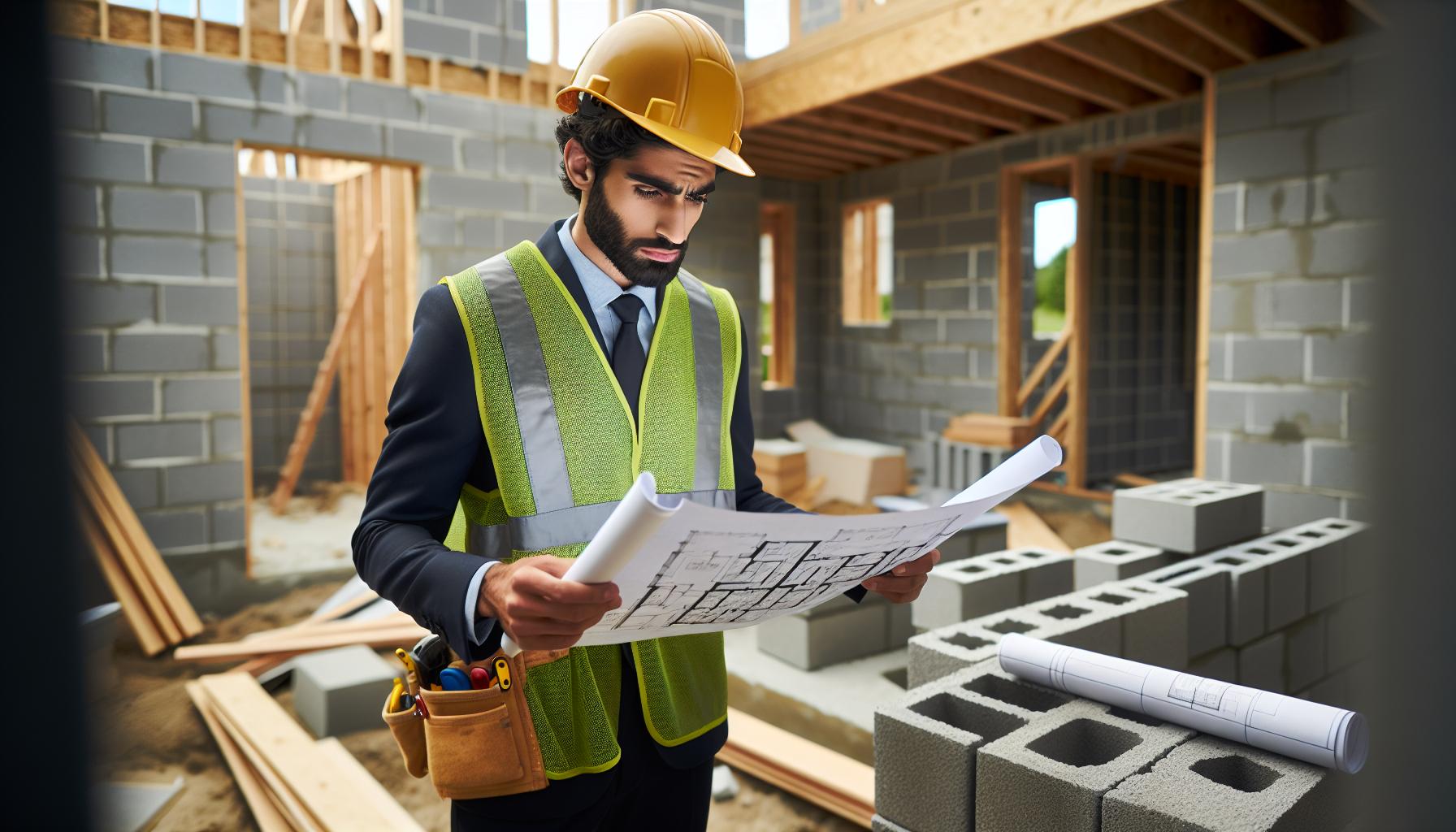As we step into 2024, many homeowners find themselves wondering if this year will finally bring a break in renovation costs. Will home renovation costs go down in 2024? The past few years have seen soaring prices due to supply chain disruptions and increased demand. It’s no surprise that people are eager for some financial relief when it comes to upgrading their living spaces.
I’ve been closely following market trends, and there’s a buzz about potential shifts in the cost landscape. While predicting the future is never straightforward, several factors could influence whether renovation expenses will ease up. From material availability to labor market changes, each element plays a crucial role in shaping what homeowners might expect to pay.
Understanding these dynamics can help homeowners make informed decisions about their renovation plans. Whether you’re planning a kitchen overhaul or a simple bathroom update, knowing what to anticipate in terms of costs can make all the difference in budgeting and planning effectively.
Key Takeaways
- Renovation Costs in 2024: While it’s challenging to predict precisely, potential shifts could lead to changes in renovation costs, influenced by material availability, labor market conditions, and technological advancements.
- Material and Labor Influences: Material prices and the availability of skilled labor are crucial factors affecting renovation expenses, with some stabilization in material costs observed but lingering labor shortages impacting wages.
- Role of Economic Factors: Inflation and housing market trends are key economic indicators affecting costs, with potential easing if inflation rates decrease and the housing market cools.
- Regional Variations: Significant differences in renovation costs exist across regions and between urban and rural areas, influenced by local labor rates, material availability, and economic conditions.
- Technological Impact: Innovations in materials and processes, such as smart home tech and advanced construction methods, are reshaping cost dynamics, offering potential efficiencies but sometimes higher upfront costs.
- Expert Predictions: Analysts anticipate potential stabilization or minor cost decreases if supply chain issues improve, with insights highlighting the influence of regional conditions and technology on future expenses.
Will Home Renovation Costs Go Down in 2024
Home renovation costs continue to fluctuate as we approach 2024. Understanding these current trends helps homeowners manage expectations for their projects.
Factors Influencing Renovation Costs
Several factors impact home renovation costs, will home renovation costs go down in 2024? each with distinct influences:
- Material Prices: Material costs, like lumber and steel, play a pivotal role in overall expenses. Recent trends show some stabilization in these prices, though volatility remains.
- Labor Availability: The labor market significantly affects project timelines and costs. Skilled labor shortages can lead to increased wages and prolonged project durations.
- Technological Advancements: New technologies, such as smart home integrations, offer modern solutions but add to renovation budgets.
Recent Market Fluctuations
Market fluctuations have seen renovation costs ebb and flow recently:
- Supply Chain Disruptions: Ongoing supply chain issues contribute to irregular material supply, impacting costs. These disruptions have led to temporary price surges and shortages.
- Real Estate Demand: High demand for real estate renovations, driven by homeowners upgrading existing homes, influences market pricing patterns. Increased demand often leads to higher costs.
- Economic Factors: Inflation and interest rates also play a role in renovation expenses. Rising inflation can elevate costs, while fluctuating interest rates might affect financing options.
This section provides a snapshot of trends affecting renovation costs, giving homeowners insight for financial planning.
Economic Indicators for 2024

Understanding 2024’s economic indicators offers insights into potential shifts in home renovation costs. Changes in the housing market and inflation rate significantly affect these expenses.
Predicted Changes in the Housing Market
Housing market forecasts for 2024 suggest a possible cooling of previously heated markets. If housing demand decreases, material costs could stabilize further. I anticipate that less buyer competition might lead to downward pressure on material price points. Housing supply, influenced by new construction and renovation trends, could see a balance shift, affecting overall renovation expenditure. Sources like Zillow and the National Association of Realtors serve as guideposts for expected market activities.
Impact of Inflation on Renovation Costs
Inflation’s influence on renovation costs remains a critical factor. Elevated inflation rates typically drive up material and labor costs, impacting overall project budgets. If inflation rates decrease in 2024, cost pressures might ease, allowing for more predictable budgeting. When inflation rates remain high, it’s crucial for homeowners to adjust their financial expectations accordingly, as labor and material prices often correlate directly with inflation levels, according to the Bureau of Labor Statistics. Monitoring inflation trends will be key to managing renovation expenses effectively.
Regional Differences in Home Renovation Costs

Renovation expenses vary significantly across regions due to differences in labor rates, material availability, and local economic conditions. Understanding these variations helps homeowners plan more effectively.
Variations Across the United States
Some states, including California and New York, often see higher renovation costs because of factors like increased labor wages and regulatory requirements. For instance, California’s strict building codes and limited labor pool can drive costs up. On the other hand, southern states such as Texas and Louisiana might offer more affordable renovation options due to lower labor costs and fewer regulations.
Urban vs. Rural Cost Dynamics
In urban areas, renovation costs can rise due to higher demand, limited space, and increased labor rates. For example, homeowners in cities like San Francisco or New York often face steeper expenses owing to the dense population and competitive market. Conversely, rural areas may offer more affordable renovations, as they often provide easier access to materials and less competition for skilled labor. However, the availability of some modern materials might be limited, affecting the overall cost.
Technological Advancements and Their Impact

The intersection of technology and home renovation is reshaping cost dynamics. While innovation offers efficiency and quality improvements, it also affects expenses in unexpected ways.
Innovations in Construction Materials
Emerging materials like self-healing concrete and recycled composites are gaining traction. These materials often promise longevity and sustainability but may come with higher upfront costs compared to traditional options. However, the savings over time in maintenance and energy efficiency can counterbalance initial expenditures. Robotics in material production also contributes to consistent quality and reduced human error, which might lead to cost efficiencies in the long run.
Efficiency Improvements in Renovation Processes
Advanced tools and digital platforms streamline renovation workflows. For example, Building Information Modeling (BIM) allows detailed project visualization, reducing design errors and costly rework. Moreover, drone technology streamlines site surveys, offering precision that minimizes delays. Despite initial investment in technology, these efficiencies can shorten timelines and lower total costs by reducing labor hours and waste. As these technologies become mainstream, their impact on renovation budgets continues to evolve.
Expert Predictions on 2024 Renovation Costs
Renovation costs in 2024 may vary as experts weigh in on potential trends. Analysts and industry insiders provide valuable insights into what homeowners might expect.
Analyst Opinions
Economic analysts predict stabilization in renovation costs if supply chain issues resolve. They foresee material prices leveling off, with potential minor decreases in high-demand items like lumber and steel. Labor expenses might remain high due to persistent skilled labor shortages. Analysts also suggest a possible slowdown in the housing market could ease demand, helping to moderate costs.
Industry Insider Insights
Industry insiders highlight regional disparities and technological impacts on costs. They note urban renovation expenses might decrease slightly if new tech solutions improve efficiency. In rural areas, insiders anticipate costs could decline if supply chains stabilize. Additionally, adoption of innovative materials and tools may initially raise expenses but offer long-term savings through reduced maintenance and increased energy efficiency. Insiders emphasize these innovations’ potential to reshape cost structures significantly.
Renovation Costs
As we look to 2024, the landscape of home renovation costs remains complex yet filled with potential opportunities. While predicting exact trends is tricky, staying informed about material prices and labor market conditions can help homeowners navigate their renovation plans more effectively. Regional differences and technological advancements will continue to play crucial roles in shaping costs. By understanding these factors, homeowners can better manage their budgets and expectations, making strategic decisions that align with both immediate needs and long-term goals. Whether you’re planning a major overhaul or a minor update, being prepared for these dynamics will be key to a successful renovation journey.

